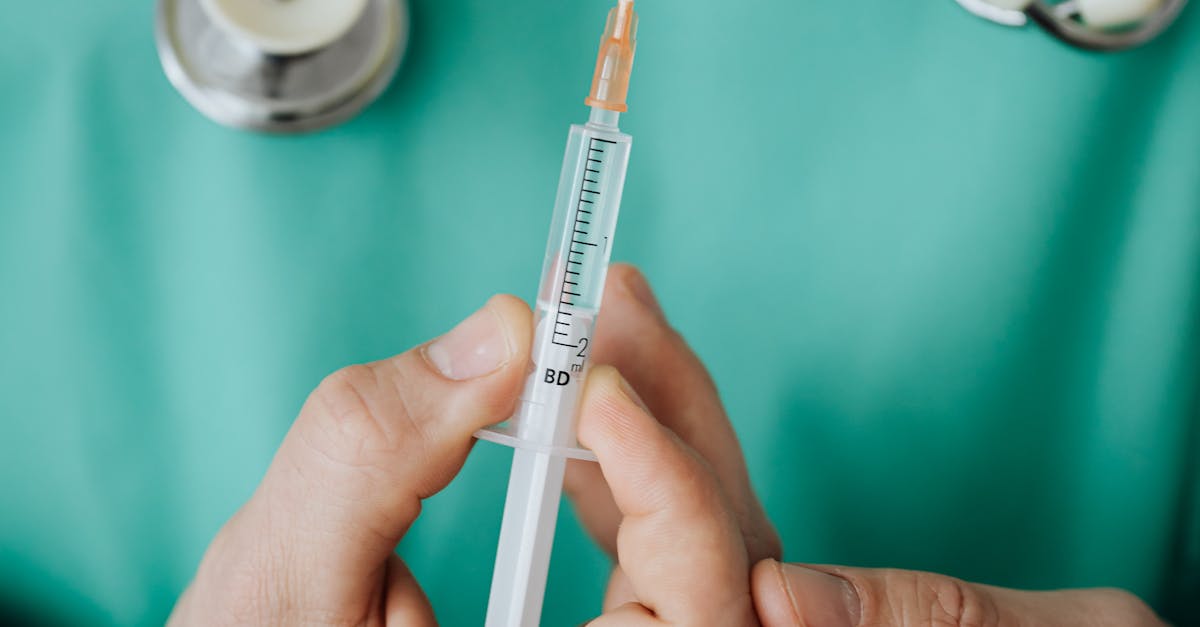
Table Of Contents
Emergency Care Facilities
Emergency Care in Victoria encompasses a range of facilities that cater to individuals in need of urgent medical attention. Emergency rooms in hospitals are the primary location for individuals seeking emergency care, where they can receive treatment for a variety of acute medical conditions. Additionally, standalone urgent care centers provide services for less critical cases that still require immediate attention but may not warrant a visit to a hospital emergency room.
Moreover, in some cases, individuals may require care at specialized facilities such as trauma centers or pediatric emergency departments. These facilities are equipped to handle specific types of emergencies, providing targeted care to those in need. Overall, Emergency Care in Victoria aims to ensure that individuals receive timely and appropriate medical attention when faced with urgent health concerns.
Different Levels of Care in Emergency Departments
Emergency Care in Victoria is offered at various levels in emergency departments to cater to the diverse needs of patients seeking urgent medical attention. The primary level, known as Level 1, provides basic emergency care services such as initial assessment, stabilizing treatments, and referrals. Patients with less severe conditions are typically managed at this level before potentially being transferred to higher levels of care if necessary. Moving up to Level 2, patients receive more specialized care with access to advanced diagnostic tools and treatments to address more complex medical issues. This level of care often involves consultations with specialists in different medical fields to ensure comprehensive and tailored treatment plans for patients in need of urgent care.
Challenges in Emergency Care
Challenges in Emergency Care are prevalent across various healthcare systems worldwide, including Emergency Care in Victoria. The rising demand for emergency services coupled with limited resources often leads to overcrowded emergency departments, causing delays in patient care. Additionally, the increasing complexity and severity of cases require healthcare providers to constantly adapt and enhance their skills to meet the evolving needs of patients in critical conditions.
Another challenge faced by Emergency Care in Victoria is the need to maintain high standards of care while minimizing errors and ensuring patient safety. The fast-paced and high-pressure environment of emergency departments can sometimes result in communication breakdowns or lapses in protocol adherence, compromising the quality of care delivered to patients. Striking a balance between efficiency and thoroughness is essential to address these challenges and ensure optimal outcomes for patients seeking emergency care.
Addressing Time Sensitivity in Critical Cases
Addressing time sensitivity in critical cases is a crucial aspect of emergency care in Victoria. When a patient arrives at an emergency department with a life-threatening condition, every second counts. The medical team must act swiftly and efficiently to stabilize the patient and provide timely interventions to ensure the best possible outcome.
In these critical cases, medical professionals follow established protocols and guidelines to prioritize the most urgent cases. This involves rapidly assessing the patient's condition, ordering necessary tests, and beginning treatment without delay. By addressing time sensitivity in critical cases, emergency care providers in Victoria strive to save lives and minimize long-term complications for patients in need of urgent medical intervention.
Training for Emergency Response
Training for emergency response is a crucial aspect of ensuring effective and efficient care in emergency situations. Emergency care in South Yarra, Victoria, emphasizes the importance of providing comprehensive training to healthcare providers, first responders, and even members of the general public. These training programs are designed to equip individuals with the knowledge and skills needed to respond to various medical emergencies promptly and effectively.
One of the key components of training for emergency response is the emphasis on hands-on practice and simulation exercises. By engaging in realistic scenarios, participants can gain valuable experience in assessing situations, making quick decisions, and providing appropriate care. This type of training not only builds confidence but also helps individuals develop the critical thinking skills necessary to handle high-pressure situations in emergency care settings.
Importance of CPR and First Aid Training
Importance of CPR and First Aid Training
Emergency Care in Victoria underscores the critical importance of CPR and First Aid training in preparing individuals to respond promptly and effectively in emergency situations. CPR, or cardiopulmonary resuscitation, is a life-saving technique that can sustain a person's circulation and breathing during cardiac arrest. First Aid training equips individuals with the necessary skills to provide immediate care and support in a wide range of medical emergencies, from burns and fractures to sudden cardiac events.
In emergency situations, swift and appropriate action can significantly impact the outcome for the individual in need. It is essential for individuals, both within healthcare settings and the general public, to possess the knowledge and skills required to intervene effectively before professional medical help arrives. CPR and First Aid training empower individuals to be proactive in emergency situations, potentially saving lives and mitigating the severity of injuries or medical conditions. By investing in training programs for CPR and First Aid, communities in Victoria can enhance their overall preparedness and responsiveness to unforeseen crises.
FAQS
What is emergency care?
Emergency care refers to medical treatment provided to individuals who require immediate attention due to a sudden illness or injury. It is aimed at stabilizing the patient's condition and preventing further complications.
What are the different levels of care available in emergency departments?
Emergency departments offer various levels of care, including primary care for non-life-threatening conditions, urgent care for moderately severe issues, and critical care for life-threatening emergencies.
What are some challenges faced in emergency care?
Challenges in emergency care include overcrowding, resource limitations, communication barriers, and addressing time sensitivity in critical cases.
How do healthcare professionals address time sensitivity in critical emergency cases?
Healthcare professionals in emergency care settings prioritize patients based on the severity of their condition, implement rapid assessment and treatment protocols, and ensure efficient communication among team members to reduce response times.
Why is training important for emergency response?
Training for emergency response equips individuals with the necessary skills and knowledge to provide immediate assistance in critical situations, potentially saving lives. Training in CPR and first aid is particularly crucial for providing initial care before professional help arrives.


